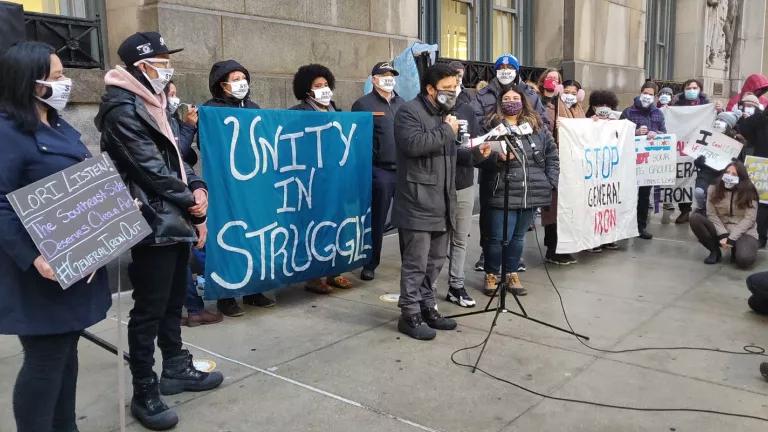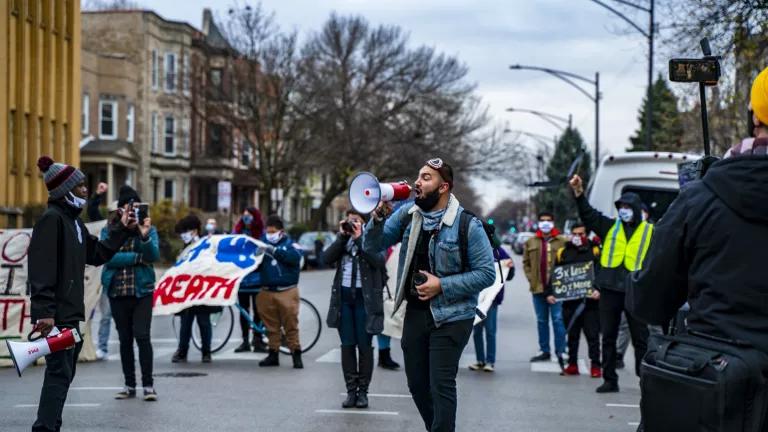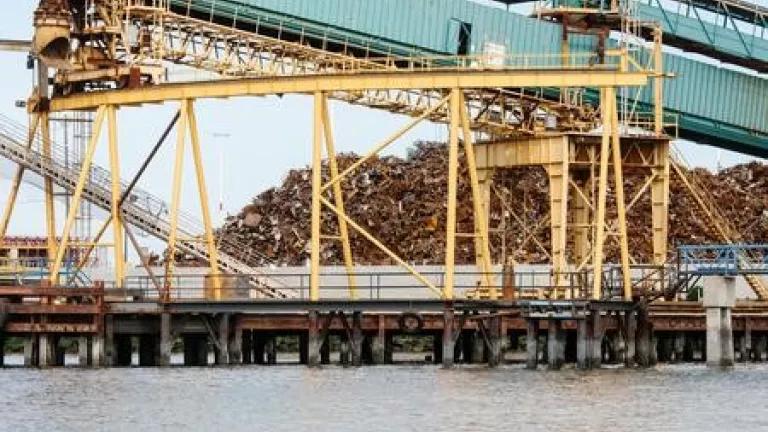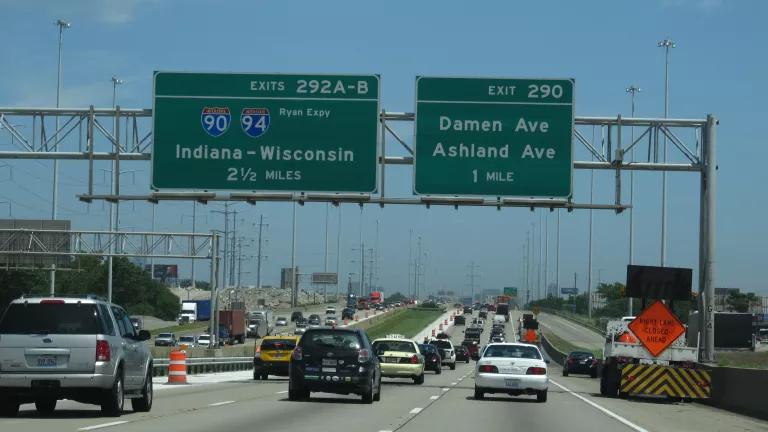
Chicago Southeast Siders are ending the year exhausted.
As I look back on this past year, I see the obvious pattern of environmental racism in the city’s zoning and land-use policies. These policies and the officials responsible for them are to blame for making communities like mine sacrifice zones for the city’s worst polluters.
It’s no coincidence that my working-class Latino neighborhood has dealt with manganese contamination in our soil, petcoke dust blowing in the wind, and some of the highest rates of air pollution in the city. None of it has been accidental, where we are now is the direct result of decisions made by officials like Chicago Public Health Commissioner Allison Arwady who allow industry to move into our community.
Our protest against General Iron, a clout-heavy scrap shredder with a long history of pollution problems on Chicago’s North Side, has garnered national attention. The wealthy, white Lincoln Park community voiced environmental complaints about the facility, ultimately getting it moved out of their neighborhood. Then General Iron fixed their eyes on moving their operation to a common target for polluters: The Southeast Side.
Although this May the U.S. EPA ordered Chicago officials to pause the permitting process to conduct environmental justice analyses on the potential impact to our community, the city’s Health Department is all set to allow the facility to re-open on the Southeast Side near our local elementary and high school sometime this holiday season, pending a final decision by the end of next month.
The permit that we fought against for years is likely to be issued while the community focuses on spending time with their families. It’s not an accident that the city’s Health Department is doing the bulk of their decision making about issuing this permit during the holidays, they want to bury this shameful and environmentally racist decision with the hope that the community is too distracted and dejected to fight back.
So how exactly did we get here?
It was the summer of 2018 when General Iron Industries officially announced plans to move the company’s shredding operation from Lincoln Park to the Southeast Side, even as we already faced threats from other polluters.
We held our first press conference and protest in front of General Iron’s scrap metal yard in Lincoln Park that July. My first visit to the facility was unique in that I could immediately taste the metal in my mouth. The streets were dusty, covered in soot, and it was incredibly noisy.
Before the press conference began, a water truck owned by the company sprayed me, my young son and all the residents who showed up, a move that foreshadowed just how terrible of a neighbor they would be and the tense three-year battle against the facility that would follow.
Our fight continued as the Lincoln Park facility experienced more air quality violations, citations and many more community complaints, explosions, and fires. In June of 2020, the Illinois EPA approved construction for the new facility on the Southeast Side, which felt like a slap in the face to all our advocacy work amid a pandemic.
Though we were discouraged we never let up. We continued our protests, taking the fight directly to the homes of elected officials. I was inspired by this intergenerational effort where our passionate youth and high schoolers often led the way.
By August of 2020 community groups filed a civil rights complaint with the U.S. Department of Housing and Urban Development (HUD) against the city citing environmental racism. The complaint led to a serious investigation by the Department of Justice, but by the next month the city had approved a permit allowing General Iron to start moving its equipment into our neighborhood.
In our largest — and coldest — protest to date, we gathered outside of Mayor Lori Lighfoot’s home in November 2020. We held a die-in where everyone was lying on the cold sidewalk and street. Afterwards, I was chilled to the bone, but we were willing to take that risk because it was too important of a moment. This is life or death.
In January of 2021, the Lincoln Park facility officially closed. Their nightmare was over, which meant ours was just beginning.
It was time to do something drastic.
Our hunger strike started in February when my friends Oscar Sanchez, cofounder of Southeast Side Youth Coalition, Chuck Stark, a science teacher at George Washington High School and Breanna Bertacchi, a member of United Neighbors of the 10th Ward vowed not to eat until the city finally denied General Iron a permit to operate. Over the course of one month, more than 300 people joined in including environmental groups, aldermen and students.
Many remained committed for weeks, ending the strike a month later in March with a rally near Mayor Lightfoot’s home.
We still didn’t see tangible action until May when U.S. EPA Administrator Michael Regan urged the city to halt the relocation of the General Iron facility until a proper environmental justice analysis could be completed. And finally, they listened.
Mayor Lightfoot paused the permitting process with a vow to address the cumulative burden of pollution our community already faces. I felt a sense of relief; something I had been saying for years was being acknowledged and heard. That victory was hard won by Chicagoans who chose to fight for the health of their families and neighbors. And to the youth who had been rallying against this permit, this was a victory for them as well because they put their lives on the line. It gave them hope for their future.
After the EJ analysis was completed this October, it felt like we arrived back at square one. Although the city became even more aware of the environmental burdens we face, officials were still unmoved to keep General Iron out of our community.
Now we’ve arrived at the holiday season where all we’re getting for Christmas is a rushed permitting process for General Iron to operate.
Health Commissioner Arwady and other officials know all too well the concerns we’ve raised for years. They’ve watched our protests, met with us, and read letters from hundreds of Chicago healthcare professionals urging them to act.
We want accountability from the Chicago Department of Public Health for perpetuating environmentally racist policies that continue to amass polluting industries in the city’s communities of color. If they fail to deny the permit and reverse the policies that have created sacrifice zones in EJ communities they’re sending us the same clear message we’ve received for decades: that our health isn’t as important as their profits.
This month has been like almost all the others before it, full of protests and press conferences. If you’d told me in January that by December we would still be fighting against General Iron as officials are rushing to grant the company an operating permit, sadly I would’ve believed you. Based on Chicago’s track record, we’ve learned to hope for the best but not to expect it.




